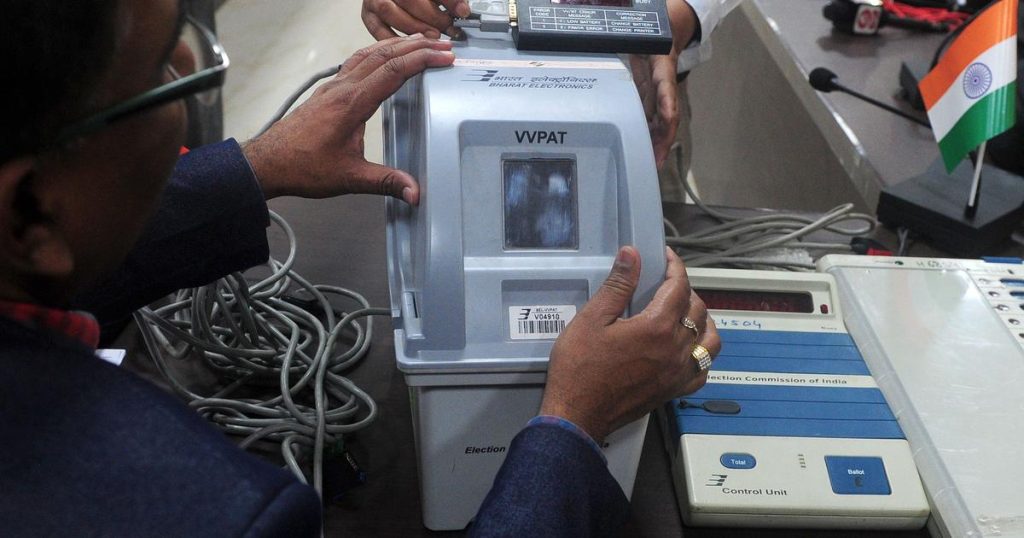Context:
The Supreme Court agreed on a series of petitions seeking cross verify the count in Electronic Voting Machines (EVMs).
More on news
- A series of petitions seeking direction to the Election Commission of India to mandatorily cross-verify the count in Electronic Voting Machines (EVMs) with votes verifiably recorded as cast by counting all Voter Verifiable Paper Audit Trail (VVPAT) slips.
- The petitions have sought a complete count (100%) of VVPAT slips in elections as opposed to the current practice of verification of only five randomly selected EVMs through VVPAT paper slips.

- The petitions propose simultaneous VVPAT verification by deploying more personnel for counting in each constituency. Sequential VVPAT verification (one by one) causes undue delay.
Significance
- The apex court in 2013 in Subramanian Swamy v. Election Commission of India that the election process should “have fullest transparency in the system and to restore the confidence of the voters”.
- It is the satisfaction and verification of the voter that is at the heart of electoral democracy and not just that of the ECI, domain experts, political parties, or candidates.
Challenges
- The Election Commission had countered that “there is no fundamental right of the voter to verify through VVPATs that their votes were ‘recorded as cast’ and ‘counted as recorded’”.
- The EC said counting of 100% VVPAT slips would pose a “great difficulty”. The chemically-coated slips were a “little sticky”. It would take an hour to count the slips from one VVPAT alone.
What is an Electronic Voting Machine?
- An electronic voting Machine (EVM) is a portable instrument for conducting elections to Parliament, Legislature,
- EVM consists mainly of two units – (a) Control Unit (CU) and (b) Ballot Unit (BU) with cable for connecting it with the Control Unit.
- A Ballot Unit (M2 EVMs) caters up to 16 candidates. Four Ballot Units linked together catering in all to 64 candidates, can be used with one Control Unit (2006-2010)
- M3 EVMs (post-2013) can cater to a maximum of 384 candidates including NOTA, by connecting 24 balloting units.
- A maximum of 2,000 votes can be recorded in an EVM.EC assured the Supreme Court that EVMs could neither be hacked nor tampered with.
- The use of EVM started back in the 1982 Kerala Assembly elections.
- Unique Serial Number: Each Control Unit (CU) has a unique Serial Number which matches with the metal strip number and Bar Code on the rear side of the CU.
What are VVPATs?
- When a vote is cast, the Voter Verifiable Paper Audit Trail (VVPAT) machine, which is attached to the ballot unit (BU) of the Electronic Voting Machine (EVM), prints out a slip of paper with the voter’s choice indicated on it. The idea of the VVPAT machine first emerged in 2010.
- The Conduct of Elections Rules, 1961 were amended in 2013 to allow for a printer with a drop box to be attached to the EVM.
- The VVPAT was used for the first time in all 21 polling stations of the Noksen Assembly constituency of Nagaland in 2013, after which the EC decided to introduce VVPATs in a phased manner.
- From June 2017, 100% of VVPATs began to be used in polls, and the 2019 Lok Sabha elections became the first general election to have 100% of EVMs being attached to VVPATs.
Also Read:
PRATUSH: Indian Telescope to Be Part of Astronomers’ Moon Deployment Plans

